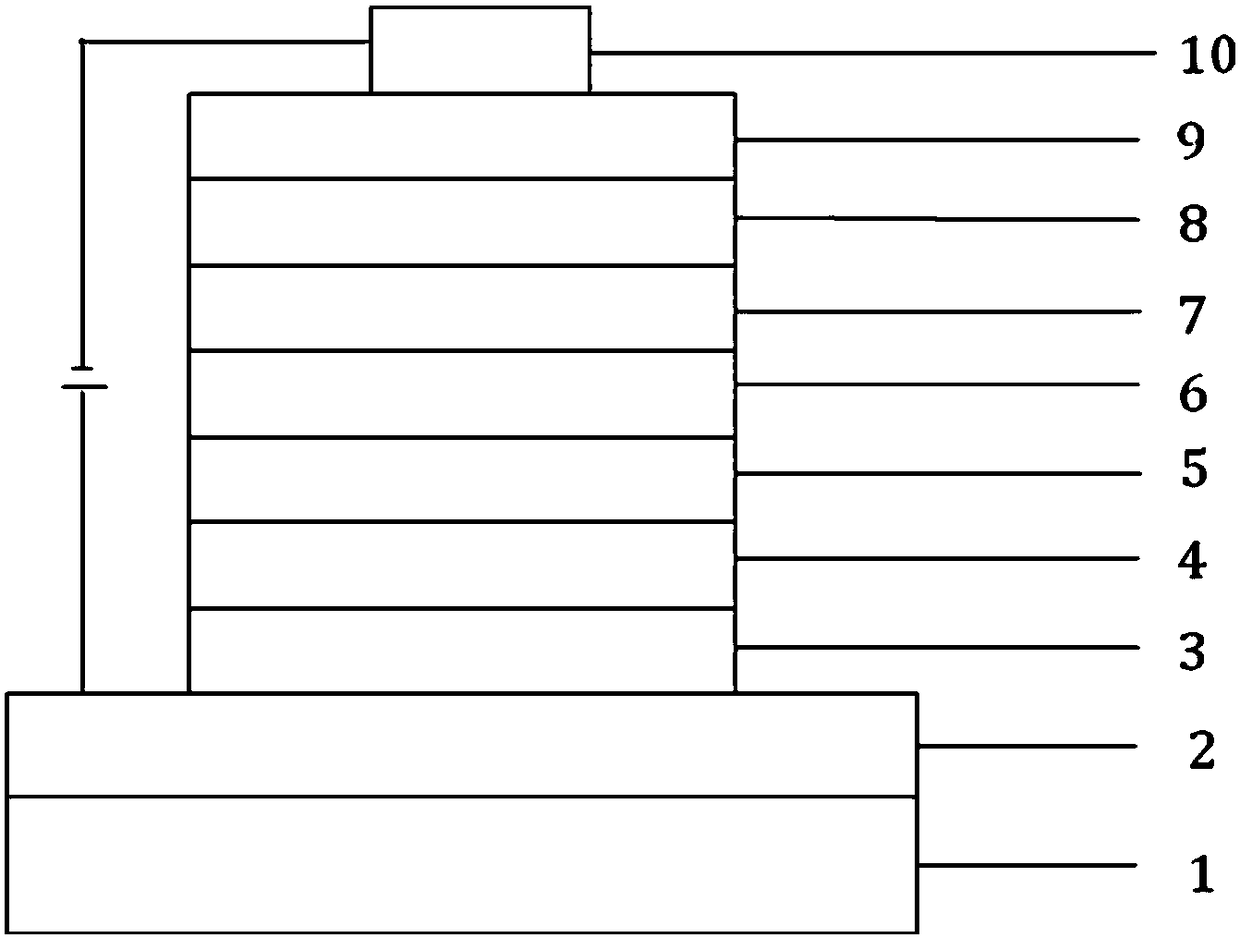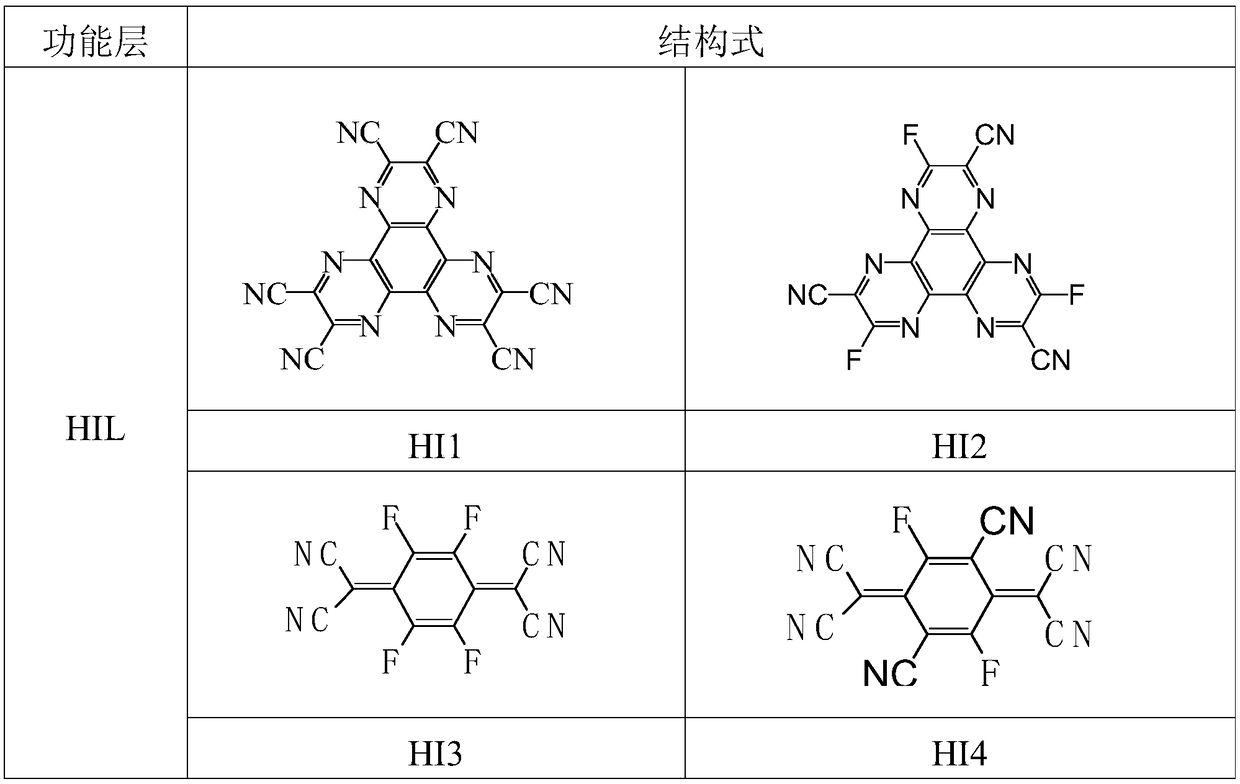A kind of organic electroluminescent device containing ketone and nitrogen heterocyclic compound and its application
A compound and nitrogen heterocyclic technology, applied in the field of organic electroluminescent devices, can solve the problems of high exciton utilization rate and high fluorescence radiation efficiency, efficiency roll-off, low S1 state radiation transition rate, etc., to achieve high efficiency, The effect of a small energy gap difference
- Summary
- Abstract
- Description
- Claims
- Application Information
AI Technical Summary
Problems solved by technology
Method used
Image
Examples
Embodiment 1
[0059] Example 1 Compound 1
[0060]
[0061] The concrete synthetic route of this compound is provided now:
[0062]
[0063] In a 250ml four-neck flask, under a nitrogen atmosphere, add 0.01mol 4-bromobenzophenone, 0.015mol9H-5-oxa-9,13b-diaza-naphthalene[3,2,1-de ] anthracene, 0.03mol sodium tert-butoxide, 1×10 -4 mol Pd 2 (dba) 3 , 1×10 -4 mol of tri-tert-butylphosphine, 150ml of toluene, heated to reflux for 24 hours, sampling plate, the reaction was complete; naturally cooled, filtered, the filtrate was rotary evaporated, and passed through a silica gel column to obtain the target product with a purity of 98.2% and a yield of 70.00%.
[0064] HPLC-MS: The molecular weight of the material is 452.15, and the measured molecular weight is 452.22.
Embodiment 2
[0065] Example 2 Compound 2
[0066]
[0067] The concrete synthetic route of this compound is provided now:
[0068]
[0069] In a 250ml four-necked flask, add 0.01mol biphenyl-4-yl-(3-bromophenyl)methanone, 0.015mol 9H-5-oxa-9,13b-diazepine under nitrogen atmosphere -Naphth[3,2,1-de]anthracene, 0.03mol sodium tert-butoxide, 1×10 -4 mol Pd 2 (dba) 3 , 1×10 -4 mol of tri-tert-butylphosphine, 150ml of toluene, heated to reflux for 24 hours, sampling plate, the reaction was complete; naturally cooled, filtered, the filtrate was rotary evaporated, and passed through a silica gel column to obtain the target product with a purity of 99.0% and a yield of 72.00%.
[0070] HPLC-MS: The molecular weight of the material is 528.18, and the measured molecular weight is 528.62.
Embodiment 3
[0071] Example 3 Compound 7
[0072]
[0073] The concrete synthetic route of this compound is provided now:
[0074]
[0075] In a 250ml four-neck flask, under a nitrogen atmosphere, add 0.01mol (4-bromophenyl)-triphenylen-2-yl-methanone, 0.015mol 9,9-dimethyl-5H,9H- 5,13b-diaza-naphthalene[3,2,1-de]anthracene, 0.03mol sodium tert-butoxide, 1×10 -4 mol Pd 2 (dba) 3 , 1×10 -4 mol of tri-tert-butylphosphine, 150ml of toluene, heated to reflux for 24 hours, sampling plate, the reaction was complete; naturally cooled, filtered, the filtrate was rotary evaporated, and passed through a silica gel column to obtain the target product with a purity of 99.1% and a yield of 76.00%.
[0076] HPLC-MS: The molecular weight of the material is 628.25, and the measured molecular weight is 628.67.
PUM
| Property | Measurement | Unit |
|---|---|---|
| thickness | aaaaa | aaaaa |
| thickness | aaaaa | aaaaa |
| thickness | aaaaa | aaaaa |
Abstract
Description
Claims
Application Information
 Login to View More
Login to View More - R&D
- Intellectual Property
- Life Sciences
- Materials
- Tech Scout
- Unparalleled Data Quality
- Higher Quality Content
- 60% Fewer Hallucinations
Browse by: Latest US Patents, China's latest patents, Technical Efficacy Thesaurus, Application Domain, Technology Topic, Popular Technical Reports.
© 2025 PatSnap. All rights reserved.Legal|Privacy policy|Modern Slavery Act Transparency Statement|Sitemap|About US| Contact US: help@patsnap.com



